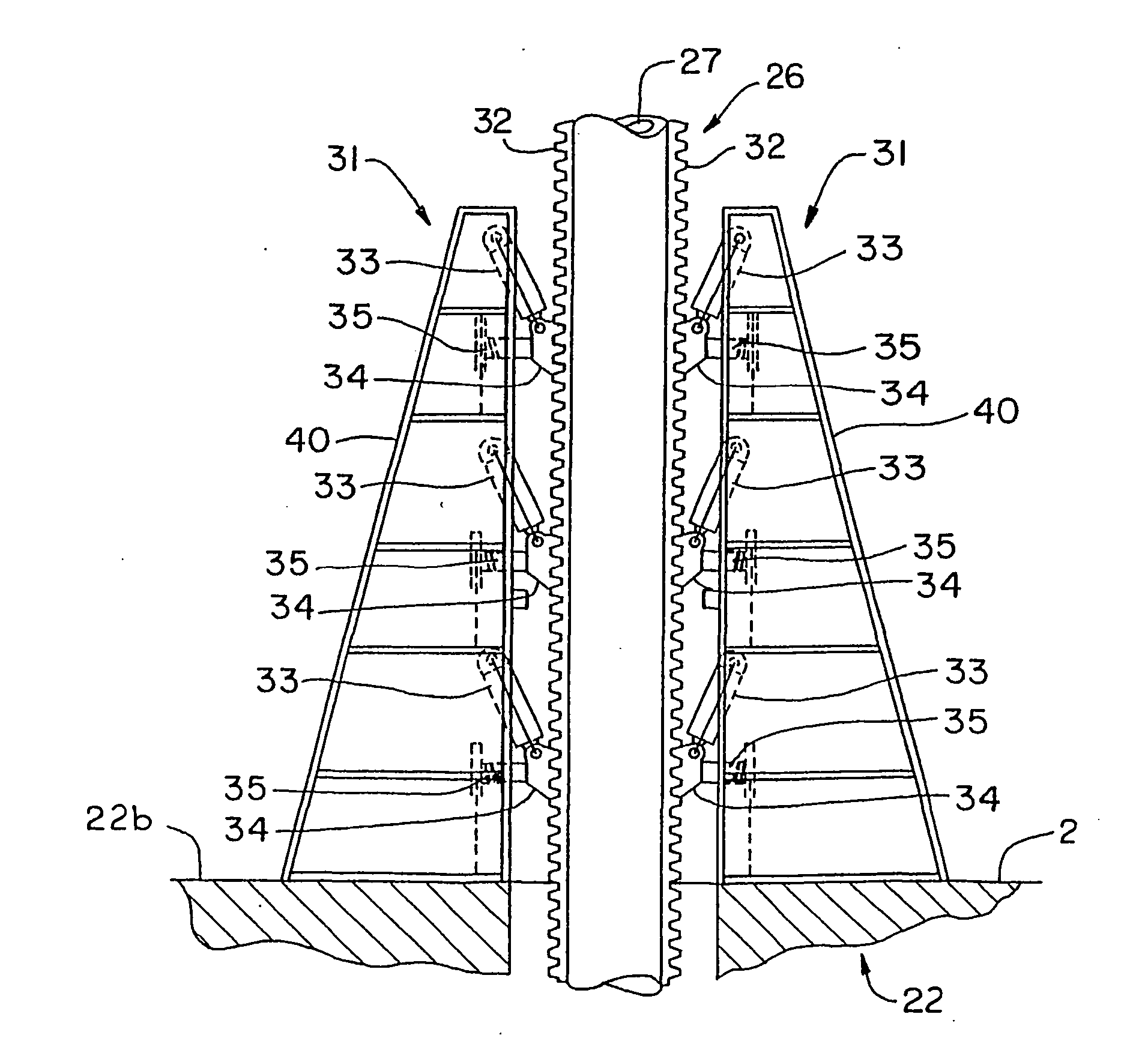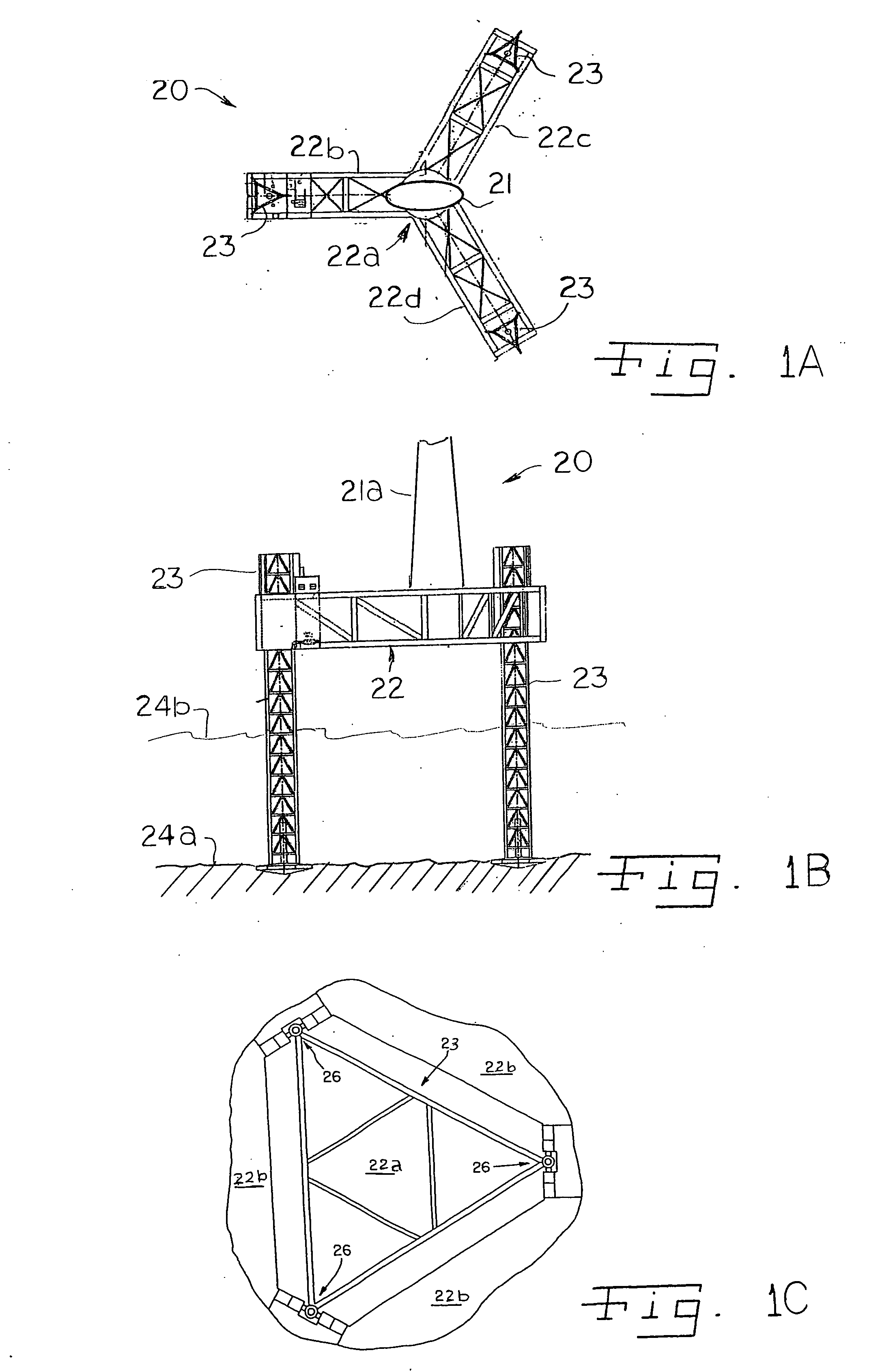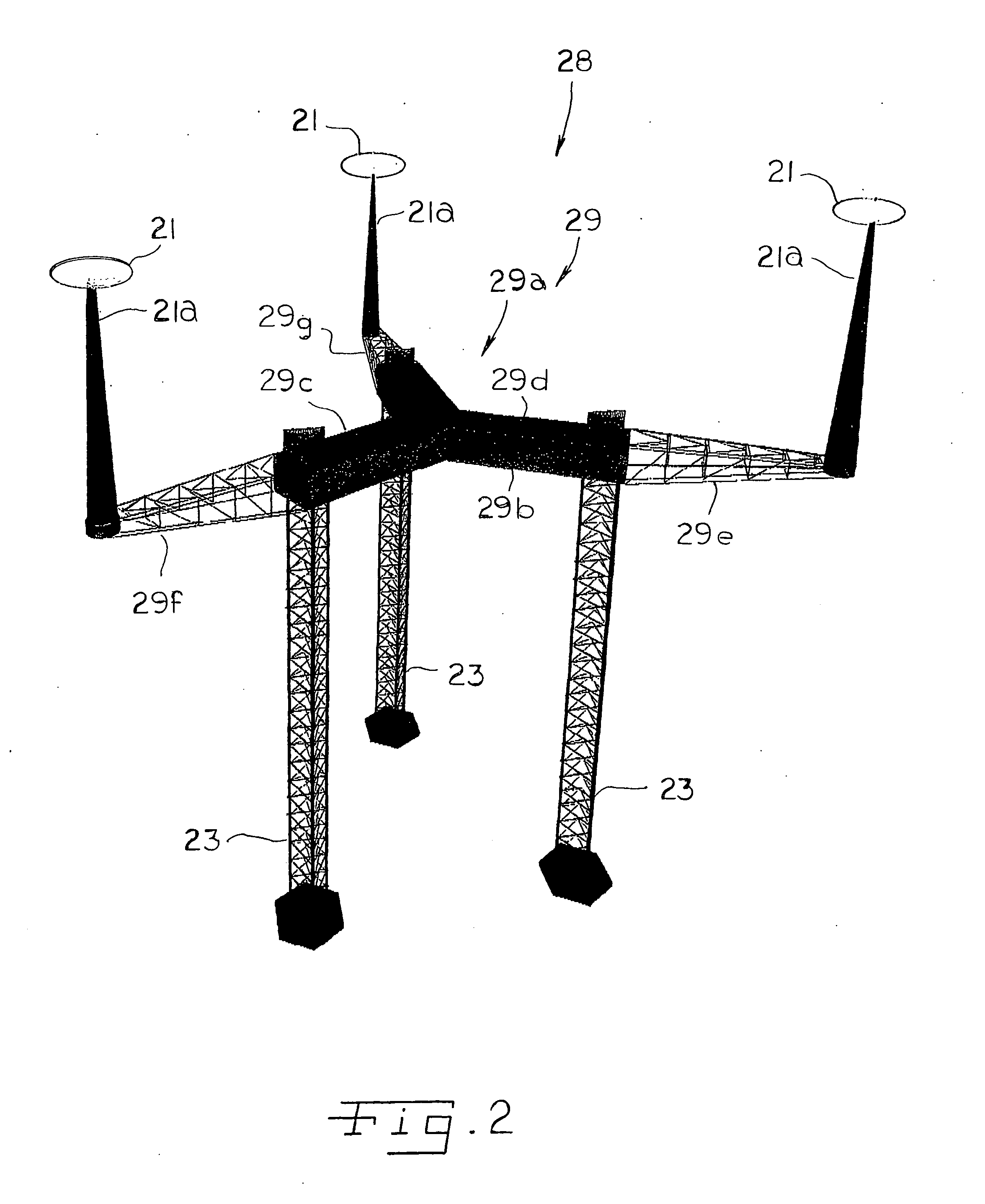Mobile wind-driven electric generating systems and method and apparatus
a technology of electric generating system and motor, which is applied in the direction of drilling pipes, caissons, artificial islands, etc., can solve the problems of high shear force, high labor intensity, and high cost, and achieve automatic and easy hydraulic jacked up, less expensive, and eliminated high tooth stress
- Summary
- Abstract
- Description
- Claims
- Application Information
AI Technical Summary
Benefits of technology
Problems solved by technology
Method used
Image
Examples
Embodiment Construction
[0033]FIG. 1A and FIG. 1B illustrate a system and apparatus 20 for the offshore generation of electricity by means of a source of electricity, such as a wind-driven generator 21. FIG. 1A is a diagrammatic illustration of the system and apparatus 20 from the side, and FIG. 1B is a diagrammatic illustration of the system and apparatus 20 from above. As illustrated by FIGS. 1A and 1B, the apparatus comprises, in addition to the wind-driven generator 21 and its support 21a, a mobile structure 22 and a plurality of legs 23 for supporting the offshore structure 21 from the earth's surface 24a under the water. The supporting legs 23 movably engage the offshore structure 22 and the system and apparatus includes means to move the supporting legs 23 relative to the mobile structure 22, one preferred such means being illustrated in FIGS. 3-15 and described in greater detail below.
[0034] As illustrated in FIG. 1A, the mobile structure 22 is supported by the supporting legs 23 from the earth's ...
PUM
 Login to View More
Login to View More Abstract
Description
Claims
Application Information
 Login to View More
Login to View More - R&D
- Intellectual Property
- Life Sciences
- Materials
- Tech Scout
- Unparalleled Data Quality
- Higher Quality Content
- 60% Fewer Hallucinations
Browse by: Latest US Patents, China's latest patents, Technical Efficacy Thesaurus, Application Domain, Technology Topic, Popular Technical Reports.
© 2025 PatSnap. All rights reserved.Legal|Privacy policy|Modern Slavery Act Transparency Statement|Sitemap|About US| Contact US: help@patsnap.com



